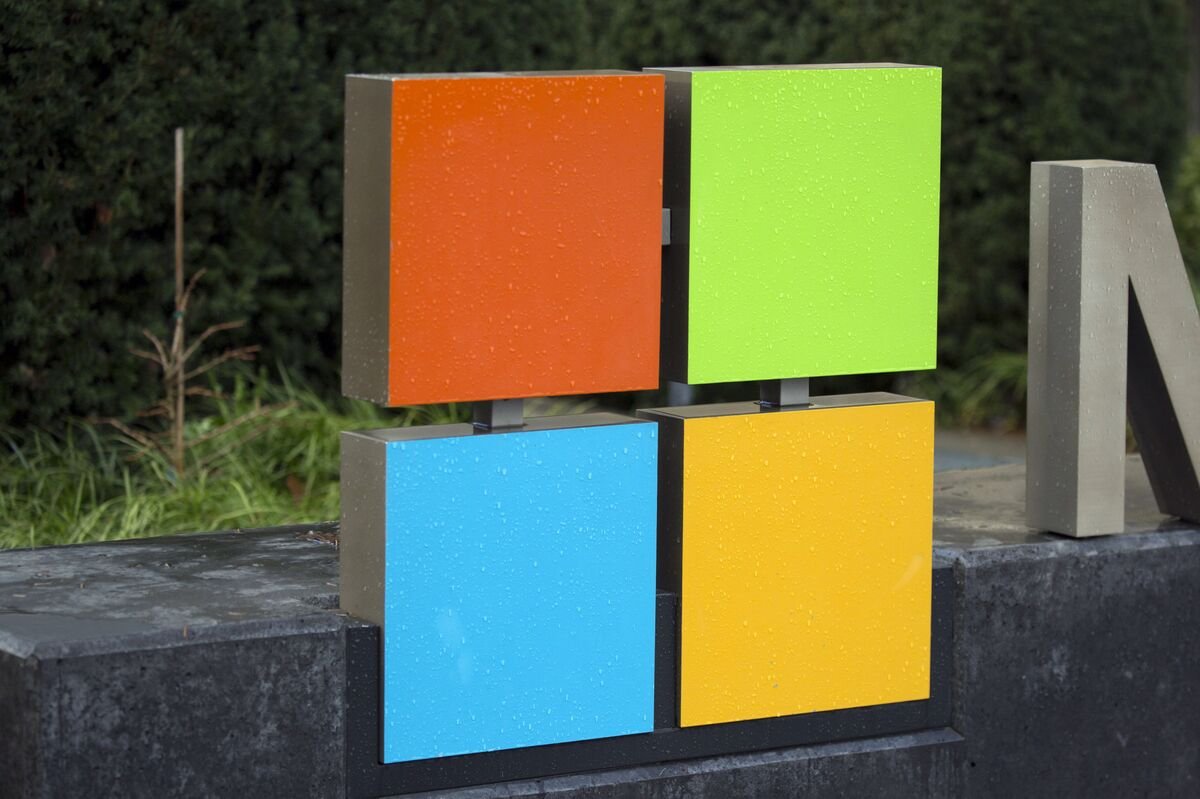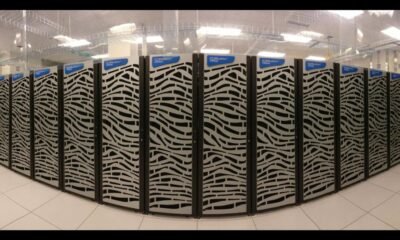AI Insights
I bombed algebra in high school. ChatGPT’s new Study Mode is my redemption arc

Welcome to Eye on AI. AI reporter Sharon Goldman here for the Thursday newsletter! In this edition...back-to-school with ChatGPT’s new Study Mode…Microsoft signs on to EU’s AI Code of Practice, but Meta has declined…OpenAI launches Stargate Norway, its first AI data center initiative in Europe…AI researchers are approaching the job market like NBA stars.
This week, I got a sneak peek at ChatGPT’s new Study Mode during an OpenAI press demo on Zoom, ahead of its Tuesday release.
Toggling the tool button in the “Ask Anything” chat to “Study and Learn” transforms ChatGPT from a straightforward Q&A assistant into a personalized tutor. Instead of simply spitting out answers, it uses Socratic questioning, hints, and step-by-step guidance to encourage active learning. Tell it what you want to study, and it will assess your skill level and even remember your progress across chats.
As I watched the demo, my eyes widened and my breath quickened. Study Mode may have been designed with college students in mind—powered by system instructions crafted with input from teachers, scientists, and learning experts. But while it’s been several decades since my own academic experience, I instantly knew that I wanted to use Study Mode. And I knew exactly what I wanted to use it for: high school algebra.
My math failure shaped my life
Along with the rest of the math curriculum in those years, I completely bombed in algebra—and I can’t overstate how much that failure shaped my life. I carried a deep sense of shame about how hard math was for me, even with tutors. It stood in stark contrast to how easily I excelled in subjects like English and social studies, and it felt like no one really understood how curious I actually was about math. There were so many questions that were never answered. What is algebra, anyway? Why do we learn it in the first place? Why does it come before geometry and trigonometry? What’s the point of all these rules about x and y?
It might seem ironic, given that I now write about AI and regularly interview researchers with PhDs in mathematics who casually reference linear algebra in conversation. But I’ve always wished I could get a do-over on high school math.
Yes, there are real concerns about how AI will affect student learning—from cheating and over-reliance to privacy and bias. New reporting this week from Rest of World found that when students in rural Colombia gained access to AI, students started failing exams.
But for me, ChatGPT’s new Study Mode is already becoming something deeply personal: a long-overdue redemption arc.
Study Mode at my own pace
I started where I never really could before, and Study Mode immediately had a refreshing response:
“Let’s treat this like the first day of Algebra 1—only better. This time, you get to ask questions whenever you want, and we move at your pace.”
I was on board with that: What is algebra, I asked.
Algebra is the part of math where we stop just working with numbers and start working with relationships between numbers.
Instead of asking:
What’s 3 × 5?
We ask:
What number x would make this equation true?
It’s like math with mystery—something is hidden, and our job is to solve for it.
“Math with mystery”—ooh, I loved that. After giving me the lowdown on the “big ideas” in algebra–everything from solving equations to graphing lines and word problems, Study Mode offered a few options:
Want to:
A) Ask questions about any of this?
B) Choose a puzzle type to start with?
C) Keep going with the intro and build slowly from here?
Your call!
I said I’d like to solve equations. Study Mode dove right in:
🔍 Solving Equations: What’s the Goal?
An equation is like a balance scale—whatever you do to one side, you have to do to the other.
Here’s your first equation:
3x + 4 = 19
👉 What do you think we should do first to start solving for x?
(Just take a guess—we’ll figure it out together.)
The promise of AI-powered personalized learning
I sat back and smiled. Apparently, it’s never too late to solve for x—even for a journalist who always thought she was good with words but terrible with numbers. I spent a couple of hours progressing through one-step and two-step equations; equations with variables on both sides; equations with parentheses; and equations combining like terms. I asked lots of questions along the way and occasionally peppered my responses with “Wow!” and “I never knew that!”
Like every AI use case, there are tradeoffs. The risks of over-reliance on AI and diminished critical thinking are real. But I find myself leaning toward the view of my colleague Jeremy Kahn, who, in his recent book Mastering AI: A Survival Guide to Our Superpowered Future, highlights the promise of AI-powered personalized learning. He frames the idea of AI as a one-on-one tutor as one of its most powerful educational opportunities.
My late-in-life return to algebra may not have been OpenAI’s target use case. But who knows—maybe I’ll make it to calculus.
With that, here’s the rest of the AI news.
Sharon Goldman
sharon.goldman@fortune.com
@sharongoldman
AI IN THE NEWS
Microsoft signs on to EU’s AI Code of Practice, but Meta has declined. Microsoft announced Thursday that it has signed on to the European Union’s General-Purpose AI Code of Practice—becoming one of the first major tech companies to formally do so. The move signals Microsoft’s support for the EU’s AI governance framework, even as it calls for simplification of what it describes as a complex regulation. Other companies have also expressed willingness to align with the voluntary code, including OpenAI and Mistral, but notable holdouts remain: Meta has declined to join, and Google has yet to make its position public.
OpenAI launches Stargate Norway, its first AI data center initiative in Europe. OpenAI launched Stargate Norway as part of its broader Stargate program under the OpenAI for Countries initiative launched in May to partner with governments and help them build out their own AI infrastructure, particularly focusing on data centers. The facility—planned for Narvik and backed by Norwegian partners Nscale and Aker—will deliver up to 230MW of AI compute capacity, with plans to scale to 100,000 NVIDIA GPUs by 2026. The project underscores OpenAI’s strategy to partner with governments and industry leaders around the world to build sovereign, sustainable AI infrastructure. It follows Stargate UAE, and is part of a growing global footprint that also includes agreements with the UK, Estonia, and early engagement with the EU’s AI Gigafactories initiative—each aimed at ensuring countries have the compute capacity and ecosystem support to harness AI for national priorities.
AI researchers are approaching the job market like NBA stars. The New York Times has a great story today about the AI talent wars, in which the race to recruit top young AI researchers has become as intense—and lucrative—as signing NBA superstars, with companies like Meta, OpenAI, Google, and Microsoft offering nine-figure compensation packages and engaging in highly publicized hiring battles. Many of these 20-something “AI free agents” are turning to informal agents and entourages to navigate the frenzy and negotiate top deals, unbound by salary caps like those in professional sports. The competition has even taken on the tone of a sports spectacle, with streaming outlets like TBPN covering notable industry job changes with the flair of a league’s trade deadline.
FORTUNE ON AI
Salesforce CEO Marc Benioff on why AI agents won’t lead to mass unemployment—by Jeremy Kahn
Mark Zuckerberg is pouring billions of dollars into AI ‘superintelligence’—so why does his Instagram pitch feel so underwhelming?—by Sharon Goldman
Meta’s Mark Zuckerberg laid out his AI vision that outperformed Q2 expectations and sent shares soaring—by Amanda Gerut
Why Booz Allen’s CTO used generative AI to make a deepfake video of himself—by John Kell
COMMENTARY: Silicon Valley’s billions of dollars on AI haven’t actually generated a return yet. Here’s why most companies should embrace ‘small AI’ instead—by Jason Corso
AI CALENDAR
Sept. 8-10: Fortune Brainstorm Tech, Park City, Utah. Apply to attend here.
Oct. 6-10: World AI Week, Amsterdam
Oct. 21-22: TedAI San Francisco. Apply to attend here.
Dec. 2-7: NeurIPS, San Diego
Dec. 8-9: Fortune Brainstorm AI San Francisco. Apply to attend here.
EYE ON AI NUMBERS
52%
That’s how many developers are not yet using AI agents, according to a new survey of software developers from Stack Overflow, the popular online question-and-answer platform for computer programmers and developers. The study found that AI agents are not yet mainstream: A majority of developers (52%) either don’t use agents or stick to simpler AI tools, and a significant portion (38%) have no plans to adopt them.
AI Insights
Microsoft Says Azure Service Affected by Damaged Red Sea Cables

Microsoft Corp. said on Saturday that clients of its Azure cloud platform may experience increased latency after multiple international cables in the Red Sea were cut.
Source link
AI Insights
Geoffrey Hinton says AI will cause massive unemployment and send profits soaring

Pioneering computer scientist Geoffrey Hinton, whose work has earned him a Nobel Prize and the moniker “godfather of AI,” said artificial intelligence will spark a surge in unemployment and profits.
In a wide-ranging interview with the Financial Times, the former Google scientist cleared the air about why he left the tech giant, raised alarms on potential threats from AI, and revealed how he uses the technology. But he also predicted who the winners and losers will be.
“What’s actually going to happen is rich people are going to use AI to replace workers,” Hinton said. “It’s going to create massive unemployment and a huge rise in profits. It will make a few people much richer and most people poorer. That’s not AI’s fault, that is the capitalist system.”
That echos comments he gave to Fortune last month, when he said AI companies are more concerned with short-term profits than the long-term consequences of the technology.
For now, layoffs haven’t spiked, but evidence is mounting that AI is shrinking opportunities, especially at the entry level where recent college graduates start their careers.
A survey from the New York Fed found that companies using AI are much more likely to retrain their employees than fire them, though layoffs are expected to rise in the coming months.
Hinton said earlier that healthcare is the one industry that will be safe from the potential jobs armageddon.
“If you could make doctors five times as efficient, we could all have five times as much health care for the same price,” he explained on the Diary of a CEO YouTube series in June. “There’s almost no limit to how much health care people can absorb—[patients] always want more health care if there’s no cost to it.”
Still, Hinton believes that jobs that perform mundane tasks will be taken over by AI, while sparing some jobs that require a high level of skill.
In his interview with the FT, he also dismissed OpenAI CEO Sam Altman’s idea to pay a universal basic income as AI disrupts the economy and reduce demand for workers, saying it “won’t deal with human dignity” and the value people derive from having jobs.
Hinton has long warned about the dangers of AI without guardrails, estimating a 10% to 20% chance of the technology wiping out humans after the development of superintelligence.
In his view, the dangers of AI fall into two categories: the risk the technology itself poses to the future of humanity, and the consequences of AI being manipulated by people with bad intent.
In his FT interview, he warned AI could help someone build a bioweapon and lamented the Trump administration’s unwillingness to regulate AI more closely, while China is taking the threat more seriously. But he also acknowledged potential upside from AI amid its immense possibilities and uncertainties.
“We don’t know what is going to happen, we have no idea, and people who tell you what is going to happen are just being silly,” Hinton said. “We are at a point in history where something amazing is happening, and it may be amazingly good, and it may be amazingly bad. We can make guesses, but things aren’t going to stay like they are.”
Meanwhile, he told the FT how he uses AI in his own life, saying OpenAI’s ChatGPT is his product of choice. While he mostly uses the chatbot for research, Hinton revealed that a former girlfriend used ChatGPT “to tell me what a rat I was” during their breakup.
“She got the chatbot to explain how awful my behavior was and gave it to me. I didn’t think I had been a rat, so it didn’t make me feel too bad . . . I met somebody I liked more, you know how it goes,” he quipped.
Hinton also explained why he left Google in 2023. While media reports have said he quit so he could speak more freely about the dangers of AI, the 77-year-old Nobel laureate denied that was the reason.
“I left because I was 75, I could no longer program as well as I used to, and there’s a lot of stuff on Netflix I haven’t had a chance to watch,” he said. “I had worked very hard for 55 years, and I felt it was time to retire . . . And I thought, since I am leaving anyway, I could talk about the risks.”
AI Insights
NFL player props, odds, bets: Week 1, 2025 NFL picks, SportsLine Machine Learning Model AI predictions, SGP

The arrival of the 2025 NFL season means more than just making spread or total picks, as it also gives bettors the opportunity to make NFL prop bets on the league’s biggest stars. From the 13 games on Sunday to Monday Night Football, you’ll have no shortage of player props to wager on. There are several players returning from injury-plagued seasons a year ago who want to start 2025 off on the right note, including Trevor Lawrence, Alvin Kamara and Stefon Diggs. Their Week 1 NFL prop odds could be a bit off considering how last year ended, and this could be an opportunity to cash in.
Kamara has a rushing + receiving yards NFL prop total of 93.5 (-112/-114) versus Arizona on Sunday after the running back averaged 106.6 scrimmage yards in 2024. The Cardinals allowed the eighth-most rushing yards per game to running backs last year, in addition to giving up the eighth-most receiving yards per game to the position.
Before making any Week 1 NFL prop bets on Kamara’s Overs, you also have to remember he’s now 30, playing under a first-year head coach and has a young quarterback who’s winless in six career starts. If you are looking for NFL prop bets or NFL parlays for Week 1, SportsLine has you covered with the top Week 1 player props from its Machine Learning Model AI.
Built using cutting-edge artificial intelligence and machine learning techniques by SportsLine’s Data Science team, AI Predictions and AI Ratings are generated for each player prop.
Now, with the Week 1 NFL schedule quickly approaching, SportsLine’s Machine Learning Model AI has identified the top NFL props from the biggest Week 1 games.
Week 1 NFL props for Sunday’s main slate
After analyzing the NFL props from Sunday’s main slate and examining the dozens of NFL player prop markets, the SportsLine’s Machine Learning Model AI says Bengals WR Tee Higgins goes Under 63.5 receiving yards (-114) versus the Browns in a 1 p.m. ET kickoff. Excluding a 2022 game in which he played just one snap, Higgins has been held under 60 receiving yards in three of his last four meetings with Cleveland.
Entering his sixth NFL season, Higgins has never had more than 58 yards in any Week 1 game, including going catchless on eight targets versus the Browns in Week 1 of 2023. The SportsLine Machine Learning Model projects 44.4 yards for Higgins in a 5-star pick. See more Week 1 NFL props here.
Week 1 NFL props for Bills vs. Ravens on Sunday Night Football
After analyzing Ravens vs. Bills props and examining the dozens of NFL player prop markets, the SportsLine’s Machine Learning Model AI says Ravens QB Lamar Jackson goes Over 233.5 passing yards (-114). The last time Jackson took the field was against Buffalo in last season’s playoffs, and the two-time MVP had 254 passing yards and a pair of touchdowns through the air. The SportsLine Machine Learning Model projects Jackson to blow past his total with 280.2 yards on average in a 4.5-star prop pick. See more NFL props for Ravens vs. Bills here.
You can make NFL prop bets on Jackson and others with the Underdog Fantasy promo code CBSSPORTS2. Bet at Underdog Fantasy and get $50 in bonus bets after making a $5 bet:
Week 1 NFL props for Bears vs. Vikings on Monday Night Football
After analyzing Vikings vs. Bears props and examining the dozens of NFL player prop markets, the SportsLine’s Machine Learning Model AI says Bears QB Caleb Williams goes Under 218.5 passing yards (-114). Primetime games like what he’ll see on Sunday night weren’t too favorable to Williams as a rookie. He lost all three he played in, had one total passing score across them, was sacked an average of 5.3 times and, most relevant to this NFL prop, Williams failed to reach even 200 passing yards in any of the three. The SportsLine Machine Learning Model forecasts him to finish with just 174.8 passing yards, making Under 218.5 a 4.5-star NFL prop. See more NFL props for Vikings vs. Bears here.
You can also use the latest FanDuel promo code to get $300 in bonus bets instantly:
How to make Week 1 NFL prop picks
SportsLine’s Machine Learning Model has identified another star who sails past his total and has dozens of NFL props rated 4 stars or better. You need to see the Machine Learning Model analysis before making any Week 1 NFL prop bets.
Which NFL prop picks should you target for Week 1, and which star player has multiple 5-star rated picks? Visit SportsLine to see the latest NFL player props from SportsLine’s Machine Learning Model that uses cutting-edge artificial intelligence to make its projections.
-

 Business1 week ago
Business1 week agoThe Guardian view on Trump and the Fed: independence is no substitute for accountability | Editorial
-
Tools & Platforms4 weeks ago
Building Trust in Military AI Starts with Opening the Black Box – War on the Rocks
-

 Ethics & Policy1 month ago
Ethics & Policy1 month agoSDAIA Supports Saudi Arabia’s Leadership in Shaping Global AI Ethics, Policy, and Research – وكالة الأنباء السعودية
-

 Events & Conferences4 months ago
Events & Conferences4 months agoJourney to 1000 models: Scaling Instagram’s recommendation system
-

 Jobs & Careers2 months ago
Jobs & Careers2 months agoMumbai-based Perplexity Alternative Has 60k+ Users Without Funding
-

 Education2 months ago
Education2 months agoVEX Robotics launches AI-powered classroom robotics system
-

 Podcasts & Talks2 months ago
Podcasts & Talks2 months agoHappy 4th of July! 🎆 Made with Veo 3 in Gemini
-

 Funding & Business2 months ago
Funding & Business2 months agoKayak and Expedia race to build AI travel agents that turn social posts into itineraries
-

 Education2 months ago
Education2 months agoMacron says UK and France have duty to tackle illegal migration ‘with humanity, solidarity and firmness’ – UK politics live | Politics
-

 Podcasts & Talks2 months ago
Podcasts & Talks2 months agoOpenAI 🤝 @teamganassi





















